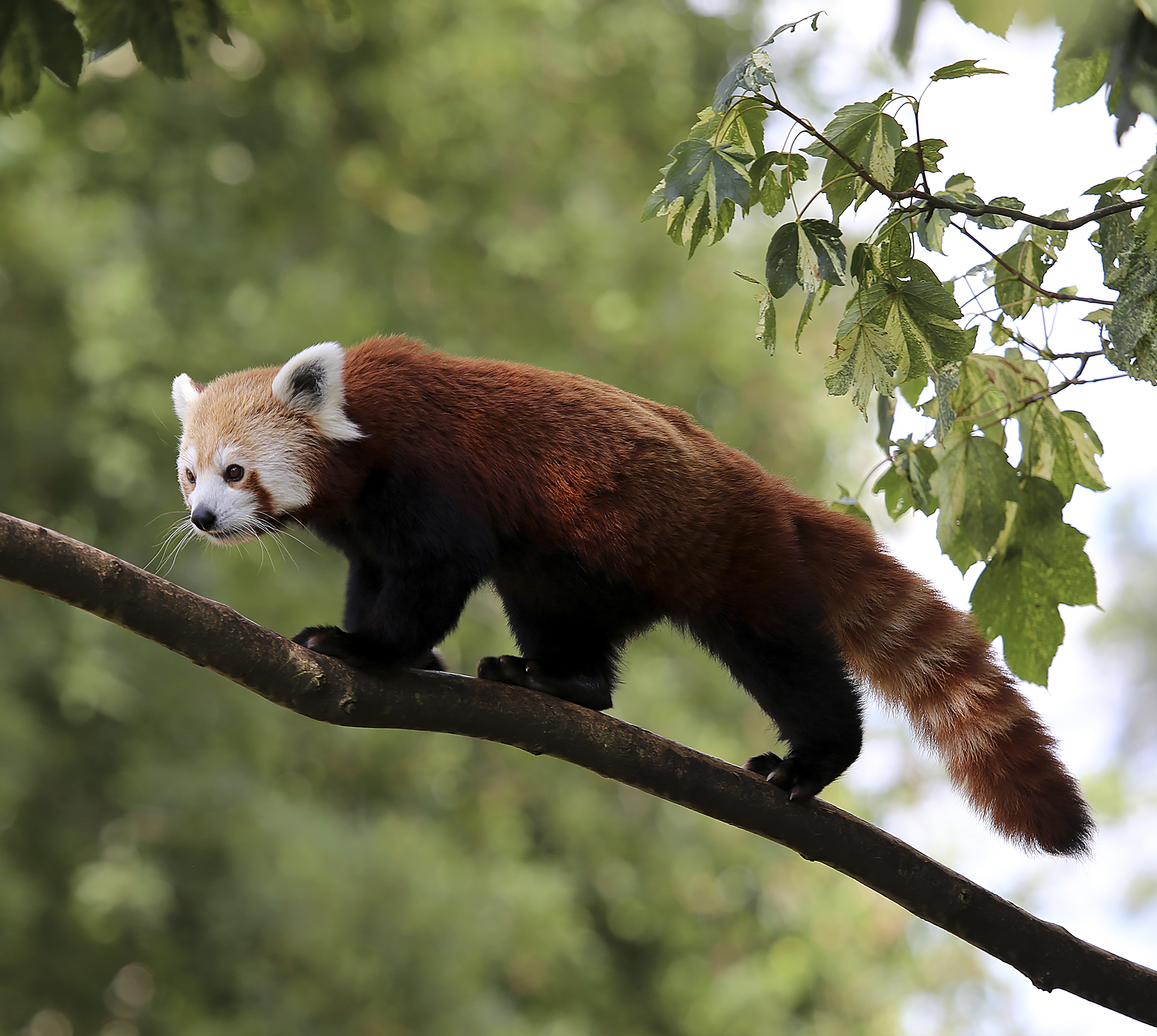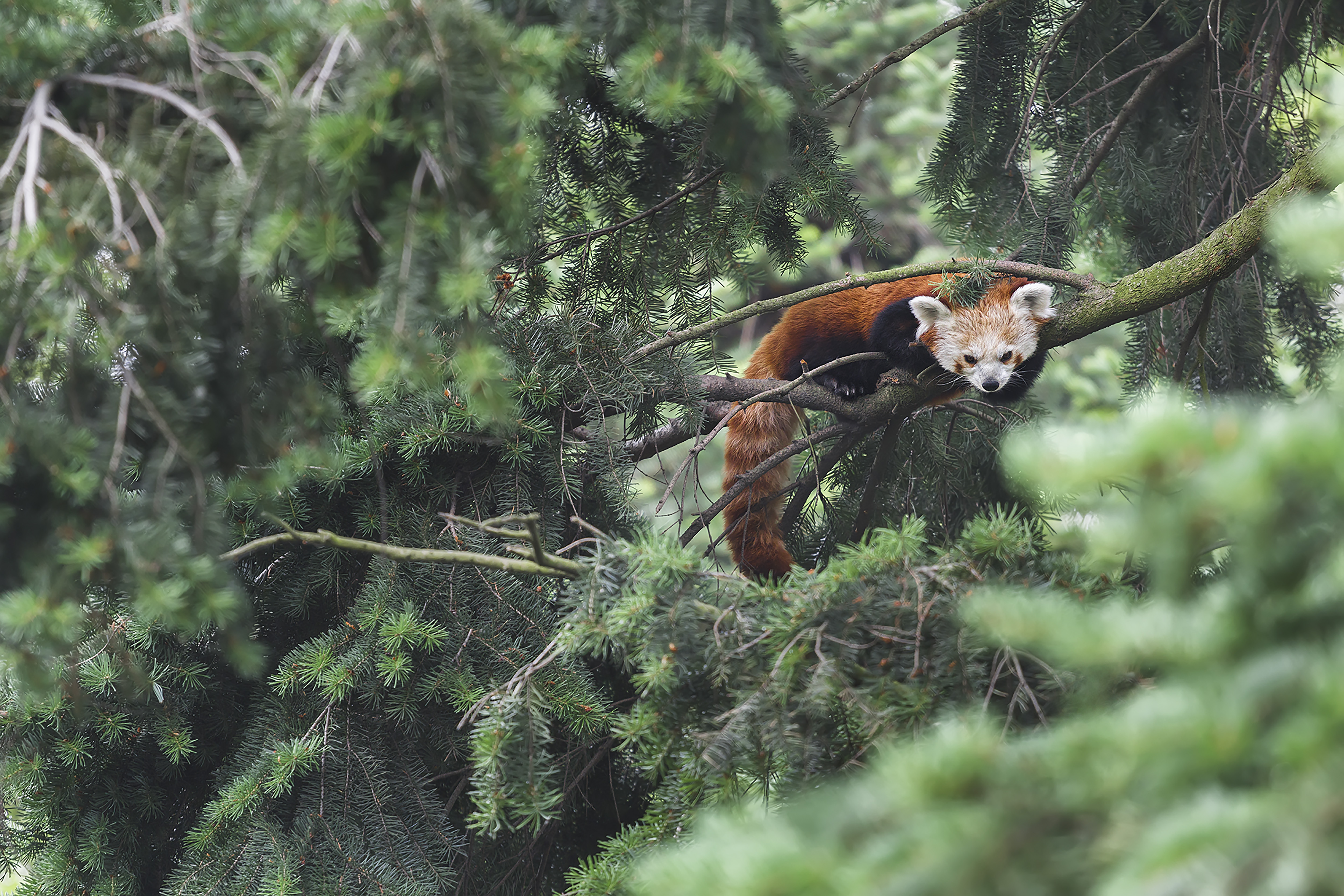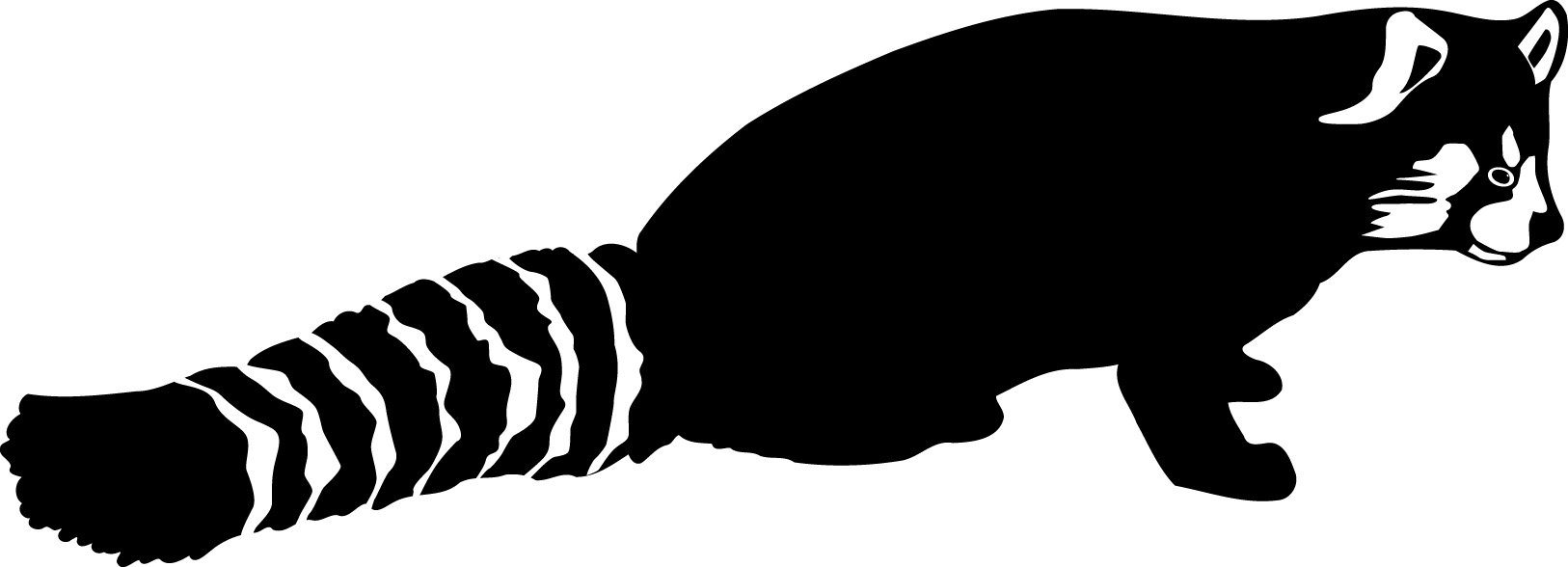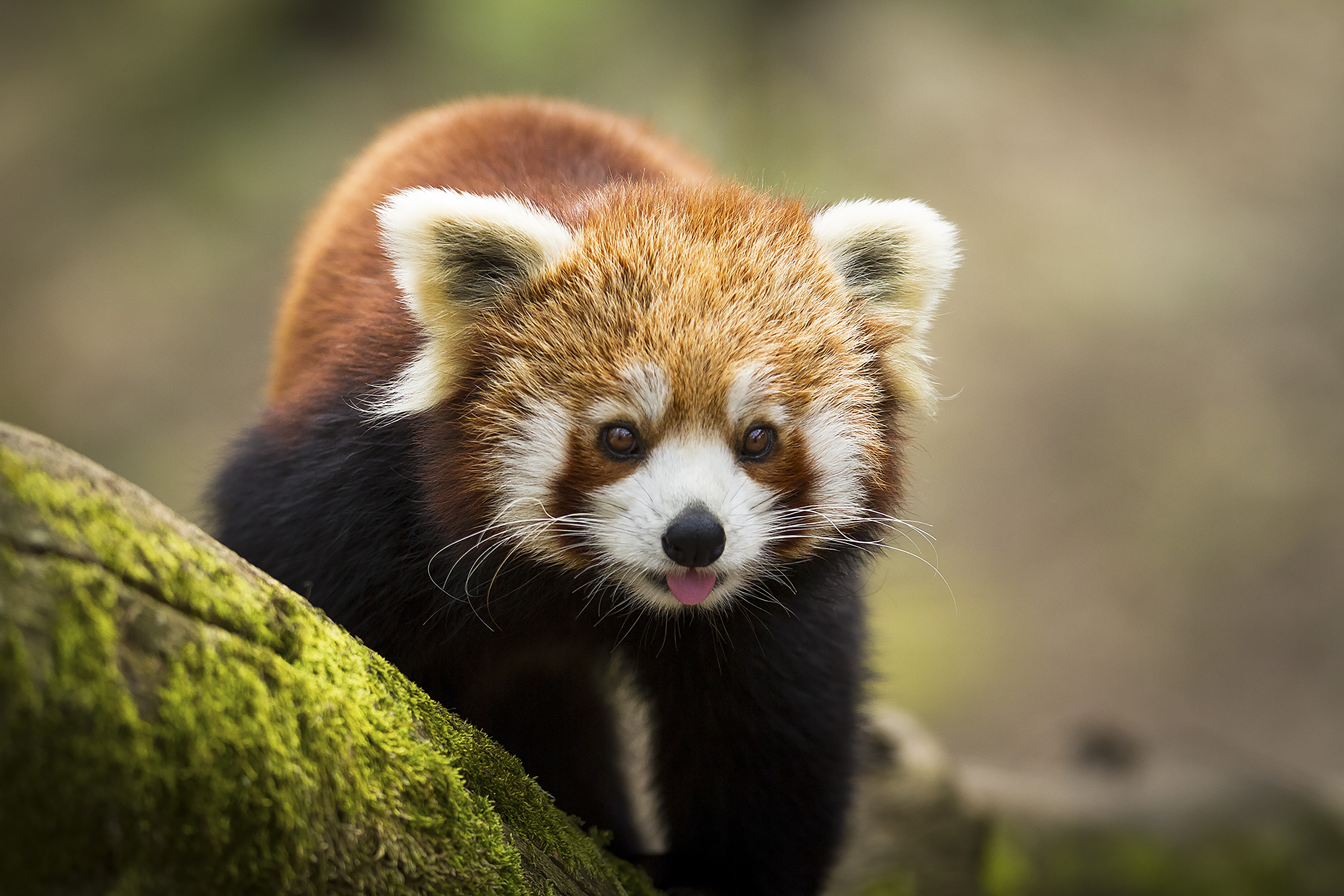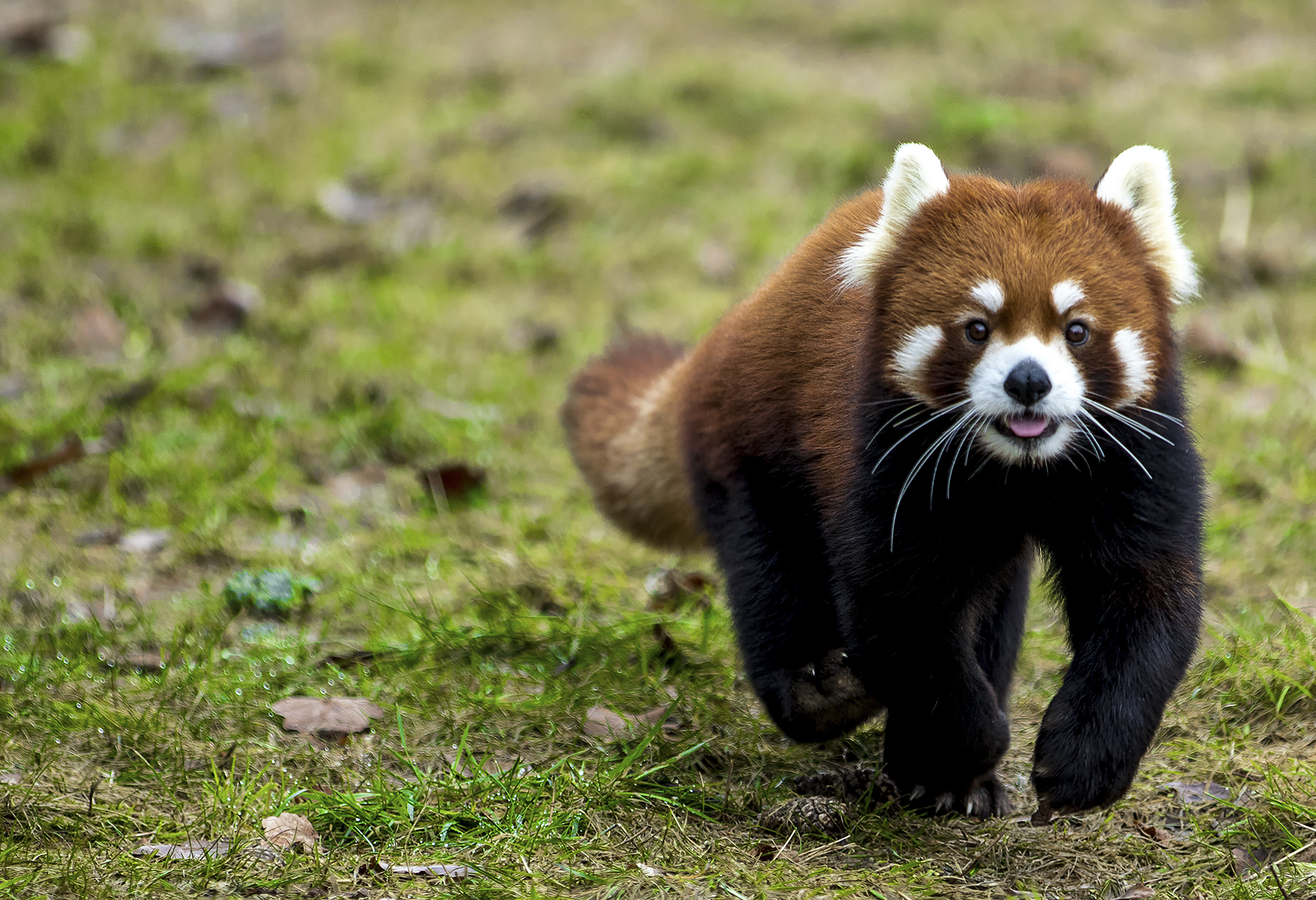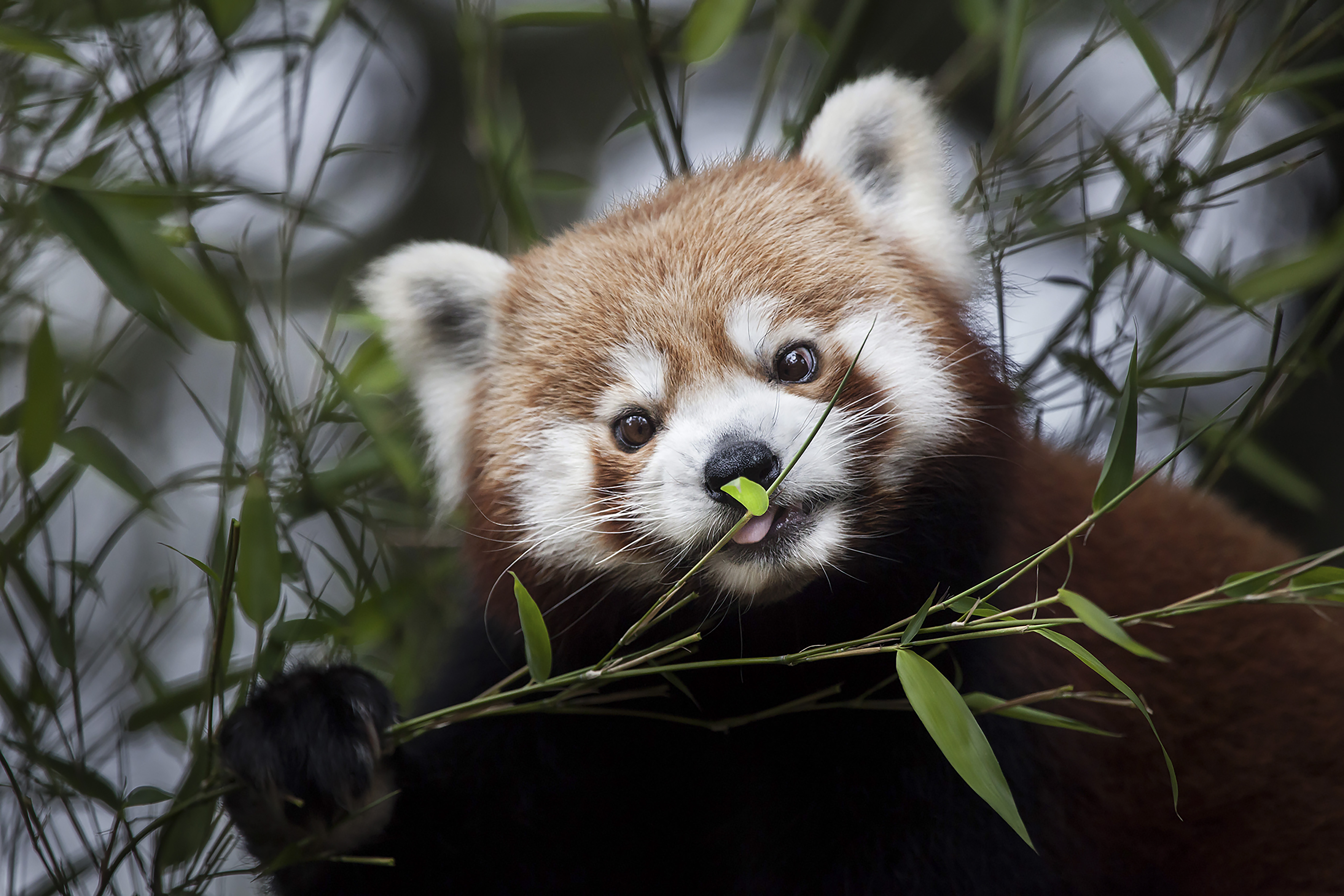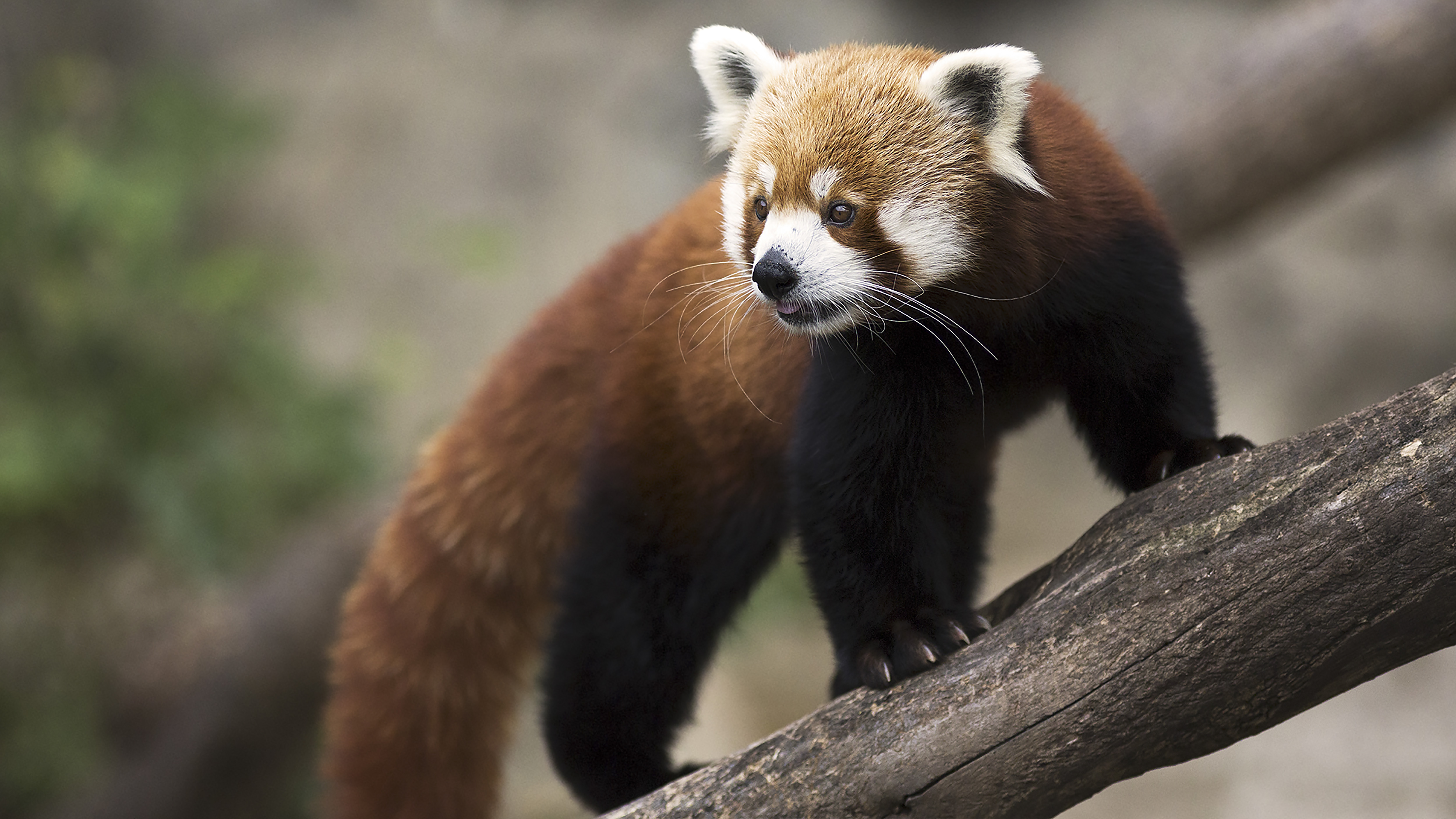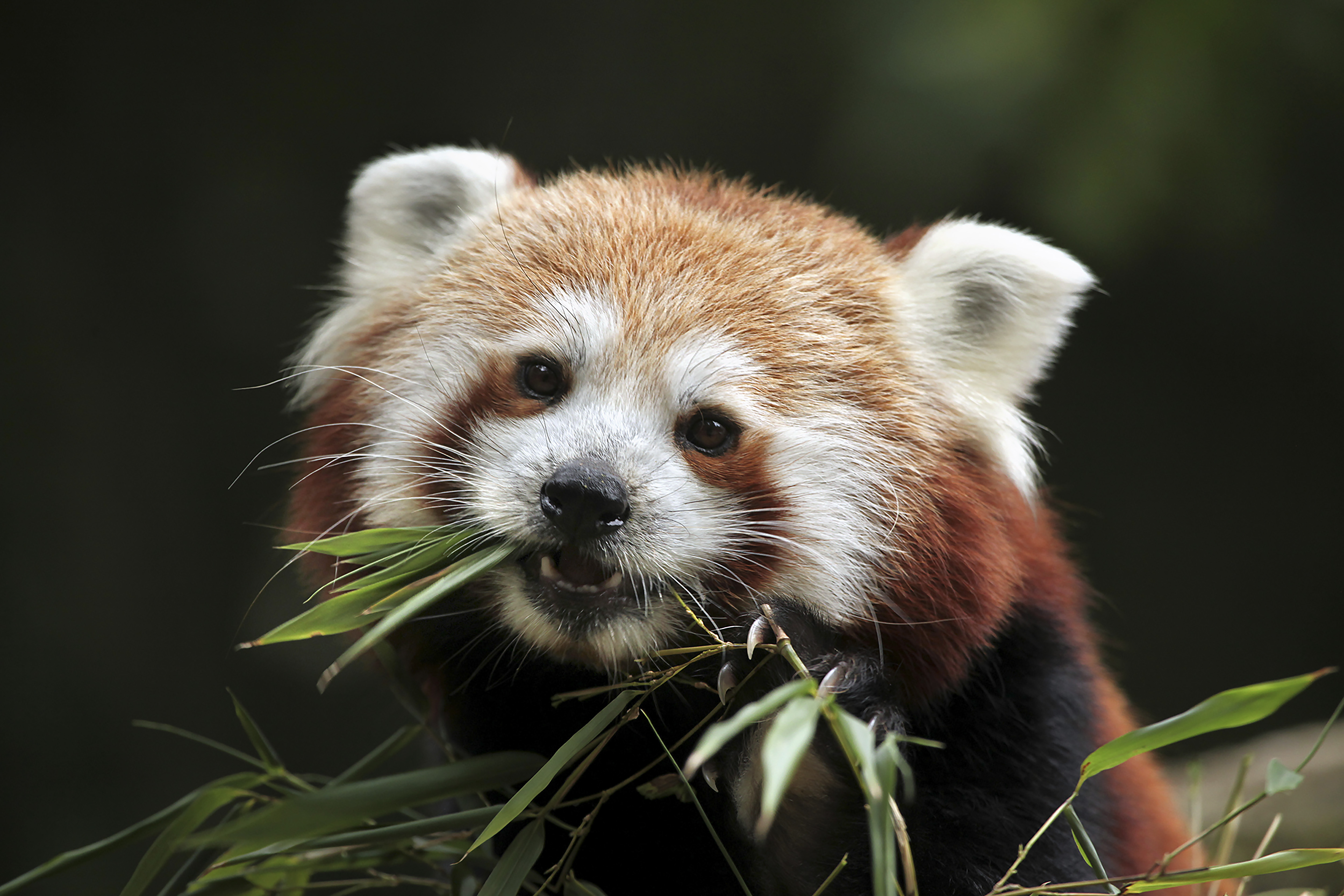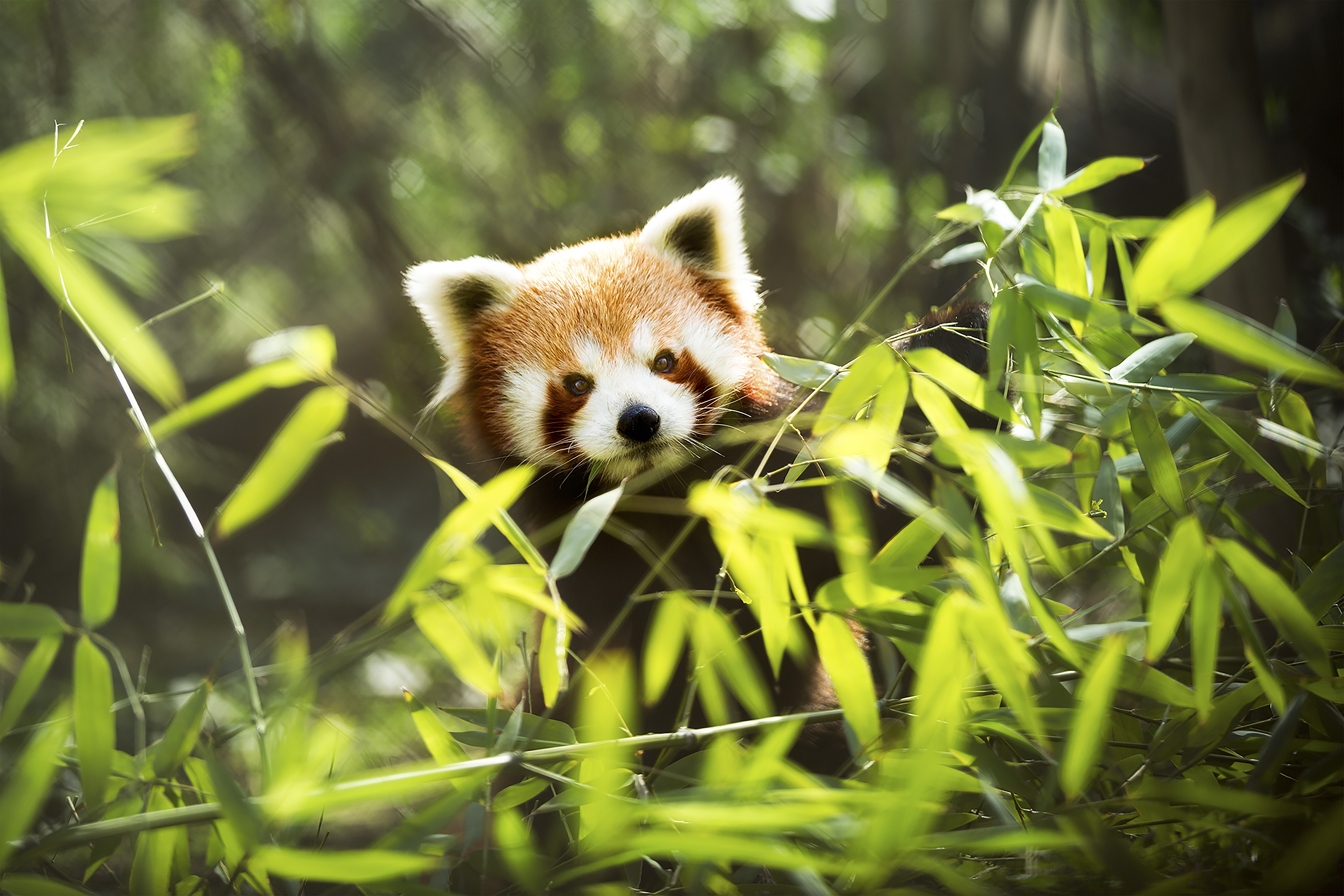Red Panda
(Ailurus fulgens)
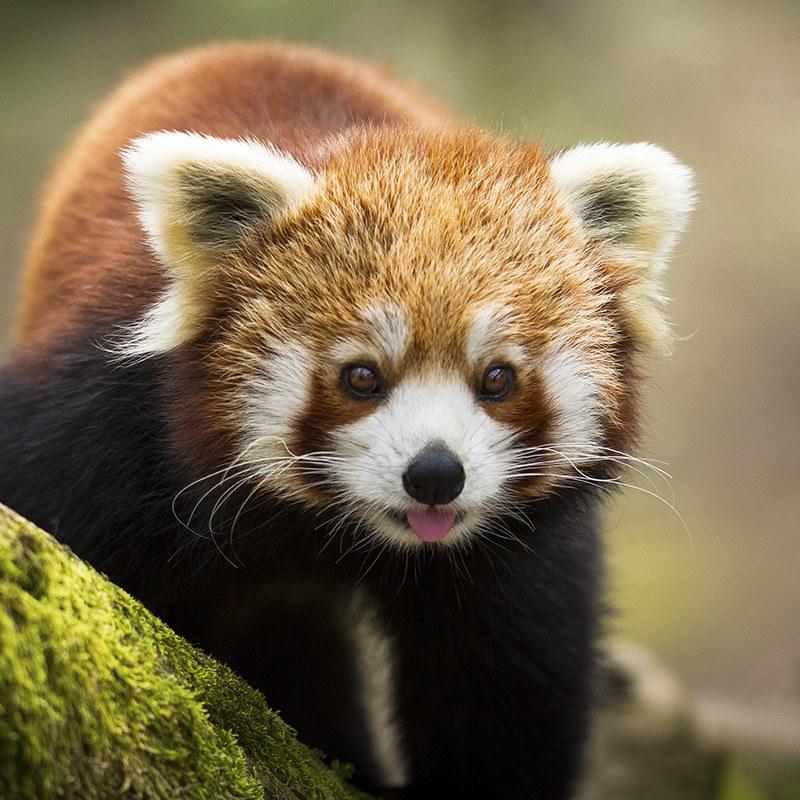
Naga-Manapuri-Chin Hills Moist Forests
STATISTICS
Length up to
62.5 cm
Weight up to
6.2 kgs
Lifespan
14 Years
Agile - Efficient Climber - Crepuscular
The Red Panda is a biologically distinct species and as such is part of its own family and is not related to the Giant Panda, which shares its name. It has a round face with white markings and white ears. The rest of its body is covered in a shiny reddish-brown coat with black legs and paws.
Its coloring provides camouflage amongst the trees which are often covered in brown moss. This is a predominantly solitary species that is most active at dawn and dusk (crepuscular). It has semi-retractable claws which makes it an efficient climber and is much more agile in trees than on the ground.
If threatened it will climb a tree and show its claws. Bamboo leaves are its primary food source however, it also feeds on blossoms, bird eggs, berries and the small leaves of other plants. Much like the Giant Panda, the Red Panda brings food to its mouth using its paw, stripping leaves off with its sharp teeth. It plays an important role in its ecosystem as a food source for predators such as the Snow Leopard (Uncia uncia) and Martens (genus Martes).
BIODIVERSITY BENEFIT
Source of Food - Seed Dispersal
THREATS
Habitat Loss and Fragmentation
Due to timber extraction, increasing human expansion, climate change.
Poaching
Target of game hunting for skin and body parts.
PROTECT THE WILDARK 100
